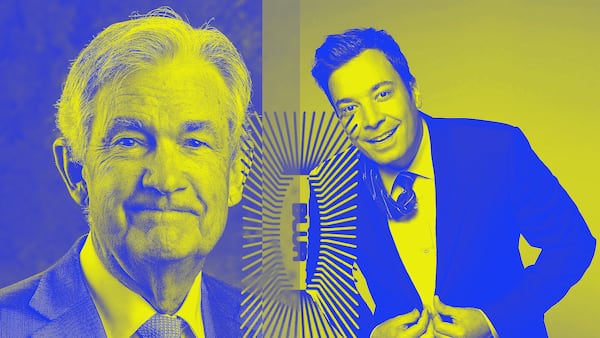Regulators forced Paxos to stop minting the Binance USD stablecoin in February. But the blockchain infrastructure platform is looking to rebound by promoting one of the oldest assets in history – gold.
Or more precisely, gold in a tokenised form.
The PAX Gold token, or PAXG, lives on a blockchain but conforms to the same market forces governing other securities, Anoushka Rayner, the head of growth commodities at Paxos, told DL News.
Paxos has high hopes its product will catch the eye of institutional investors as well as crypto players hungry for tokenised assets.
Real-world assets
Paxos, a regulated trust company that provides custody services for crypto investors, is one of the latest ventures seeking to capitalise on the growing popularity of on-chain “real-world assets” such as bonds and commodities.
Last week, S&P Global said issuers have distributed more than $1.5 billion in digital bonds in the past year, up from almost nothing in 2021. And top-shelf names such as Goldman Sachs and Societe Generale are testing this new approach.
Tokenisation and real-world assets, or RWA, is a bright spot in a market still clouded by the FTX debacle and the annus horribilis of 2022. DeFi and TradFi players are increasingly collaborating on bringing assets on-chain.
There are benefits for both sides: Institutions may garner new efficiencies for assets that fit their time-tested risk models, and blockchain outfits can tap a fresh source of revenue growth.
NOW READ: Silvergate short seller says he’s betting against Signature: ‘Binance is next’
It isn’t just DeFi stalwarts such as MakerDAO and Aave trumpeting the promise of RWA – Larry Fink, the CEO BlackRock, the No. 1 global investment firm with $10 trillion in assets under management, said in December that tokenised traditional assets are the “next generation for securities.”
As promising as that sounds, it’s still early days. It takes a long time to change the habits of the capital markets – the electronification of stocks, for instance, took forever to unfold.
Investors tend to kick around new products for years before they fully embrace their utility. It took two decades for the exchange-traded fund to become the dominant instrument it is today.
‘Tokenisation and real-world assets, or RWA, is a bright spot in a market still clouded by the FTX debacle and the annus horribilis of 2022.’
Moreover, the structural pieces that make up a capital marketplace – trading protocols, depository settlement, global brokering networks – remain primordial in the token markets.
Then there’s the regulatory element, which has become quite urgent in recent weeks as US authorities press crypto ventures to comply with securities laws.
In other words, getting Wall Street and the City of London to go all in on tokenisation is a big, big ask.
Yet Paxos’ promotion of PAXG is a sign that blockchain ventures are taking on the challenge. The platform, which was founded in 2012 as a crypto exchange, has raised $500 million in venture capital, and has grown to provide brokerage and settlement services, as well as PAXG.
Settlement customers include Societe Generale, the No. 3 French bank, Japan’s Nomura, and Bank of America. Paxos also provides back-end services for the crypto functions of payments providers PayPal and Venmo.
The problem with gold
Paxos released PAXG back in 2019 and it has quietly and steadily grown to a market cap of $500 million. Its main attraction is convenience: Investing in gold can be a hassle. You have to buy it, transport it, and store it in specialised vaults like Brink’s in London. And the metal is heavy.
Exchange-traded funds, or ETFs, representing gold, have erased the hassle for both institutional and retail investors. Yet Rayner said PAXG differs from gold ETFs because it represents actual, physical gold held at Brink’s on a one-to-one basis.
Investors may redeem a token for one troy ounce – about 31.1 grams – at any time. In contrast, many gold ETFs are “synthetic securities” that track the price of gold but cannot be redeemed for the metal itself.
Gold, of course, is a time-honoured instrument investors buy to hedge macroeconomic risk, such as inflation, and geopolitical crises such as wars.
Paxos expects to see investors buy the token in nations roiled by conflict, economic instability, and natural disasters.
Pitching the banks
Paxos is also targeting banks as potential customers to drive its commodities settlement business. Metal trade settlement is inefficient and slow, Rayner said; PAXG could support the digitisation of these processes for banks trading in gold.
One angle is getting banks to use the token to represent gold held as collateral. But she conceded that the infrastructure for widespread trading of tokens does not exist, and said Paxos is working on making sure banks have the right tech.
“We’re trying to work with the industry and talk to banks that are in the gold market to see how tokenisation might work for them, and to make sure they have the technology to support tokens,” she said.
NOW READ: London’s crypto hub status may slip to ‘not even number three’ after Brexit deal
Getting institutions that are slow to adapt to new technology is a major sticking point. Bond issuance, for example, got a boost, according to the S&P Global research, but isn’t functioning very well in practice, Henry Chong, CEO of Fusang, a crypto exchange in Hong Kong and Malaysia, told DL News.
“It’s difficult for token blockchains to interoperate right now,” Chong said. “We see this empirically, with tokenised bond issuances – the infrastructure isn’t quite there yet. These bonds, ironically, don’t function as well as conventional ones. It’s really hard to do distribution properly, there are no real secondary market platforms, it’s all still in the very early stages.”
Key problem
One key problem is that blockchain networks aren’t interoperable, meaning that tokens may not be tradeable across them, said Srinivas L, CEO and CTO at Rooba Finance, a tokenisation and custody platform.
Custody management is still a challenge, as is scalability: tokenisation platforms have to handle large volumes of transactions while maintaining high levels of security and performance.
There’s another issue: getting regulators and the market comfortable with tokenisation. The key is ensuring that both understand that Paxos as the issuer has the assets to back the token, Rayner said.
Paxos is still smarting from a run-in with regulators on a stablecoin it issued called BUSD. In February, the New York state’s Department of Financial Services ordered the platform to cease minting the token after finding “several unresolved issues” related to Binance, the company that created BUSD in partnership with Paxos.
‘I don’t see how tokenisation can recategorise an asset, when it’s a truly one-to-one backed token.’
Then came a report that the US Securities and Exchange Commission was preparing to sue the company for failing to register BUSD as a security under federal law.
Paxos confirmed it had received a Wells notice from the SEC, adding that it “categorically disagrees” that BUSD is a security.
Rayner would not comment on the regulatory action. But she said that Paxos is “always regulation-first” and complies with NYDFS rules.
Redemption
She did, however, say that RWAs should not be considered securities just because they are tokenised. “I don’t see how tokenisation can recategorise an asset, when it’s a truly one-to-one backed token,” she said.
The one-to-one redemption feature of PAXG with physical gold should be a strength as Paxos continues to promote the product to banks, Rayner said, adding that PAXG is audited monthly.
“PAXG is a regulated token. We list all the bars that back our token, so there is full transparency on that, and we’re audited on a monthly basis. The gold bars must always be in storage, we can’t redeploy them. They literally just sit there.”



